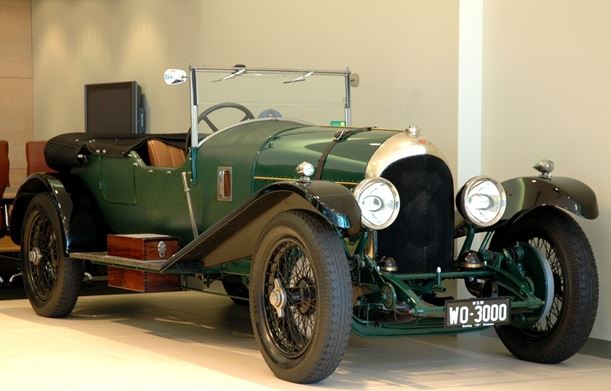Bentley has a long history of quality and extravagance. The company began as a builder of aircraft engines and high-performance cars designed with advanced technical features and unparalleled quality. Thanks to innovations like four valve heads and aluminum pistons, the company’s cars dominated the Le Mans races in the late 1920s, while the use of their engines in WWI planes such as the Sopwith Camel drew adventurous millionaires to the Bentley showrooms.
Like many luxury automakers, Bentley was nearly put out of business by the Great Depression. Rolls Royce purchased Bentley, and together they created a two-pronged approach to the luxury market: Rolls would continue to build cars for those who had chauffeurs, while Bentley would construct GT cars, combining the best technology available with the best craftsmanship.
Early on, Bentley developed a partnership with famed coachbuilders, H. J. Mulliner & Co. and Park Ward, eventually purchasing both companies and bringing them in-house to construct car bodies and interiors. Even after numerous ownership changes, the company’s manufacturing methods have been left untouched, allowing it to build cars with the same level of performance and craftsmanship that has drawn in customers for over a century.
What does this mean? While most manufacturers strive to cut assembly times of a car to mere hours, it takes time to build a Bentley.
The interior of a Bentley uses over 400 pieces of leather, each one cut from top grade hides by master leather workers. If a piece of hide even has a mark from a gnat bite, it’s rejected as this can result in premature wear. It takes 15 man-hours just to stitch the leather onto the steering wheel.
The Bentley W12 and V8 engines share basic engineering with Volkswagen and Audi products, but they undergo the same level of scrutiny as the rest of the car. Other automakers may have in-house builders for their high performance engines, but every Bentley motor is hand-built by a team with an average of 15 years of experience per person. These engines undergo tests from beginning to end to ensure durability, power and smoothness.
Each Bentley gets 120 layers of paint. Those layers are dry sanded to provide a flawless finish. To match the sheen of the paint, chrome pieces get 10 man-hours of hand polishing. And to test for a proper fit and finish, each car undergoes a monsoon-force spray of dyed water to ensure not one drop can get inside. Bentley also designs their own wheels, with each design undergoing 2,000 hours of salt water spray before approval to ensure durability.
Each interior uses approximately 70 square feet of burl walnut. This wood’s unique pattern is created by a fungal infection, and requires a century of growth to form. By using this natural phenomenon, Bentley is able to split the wood in a way that creates symmetrical wood grain patterns throughout the car.
Those interested in the Bentley experience can visit Park Place Bentley Dallas to talk with our Experts in Excellence.



